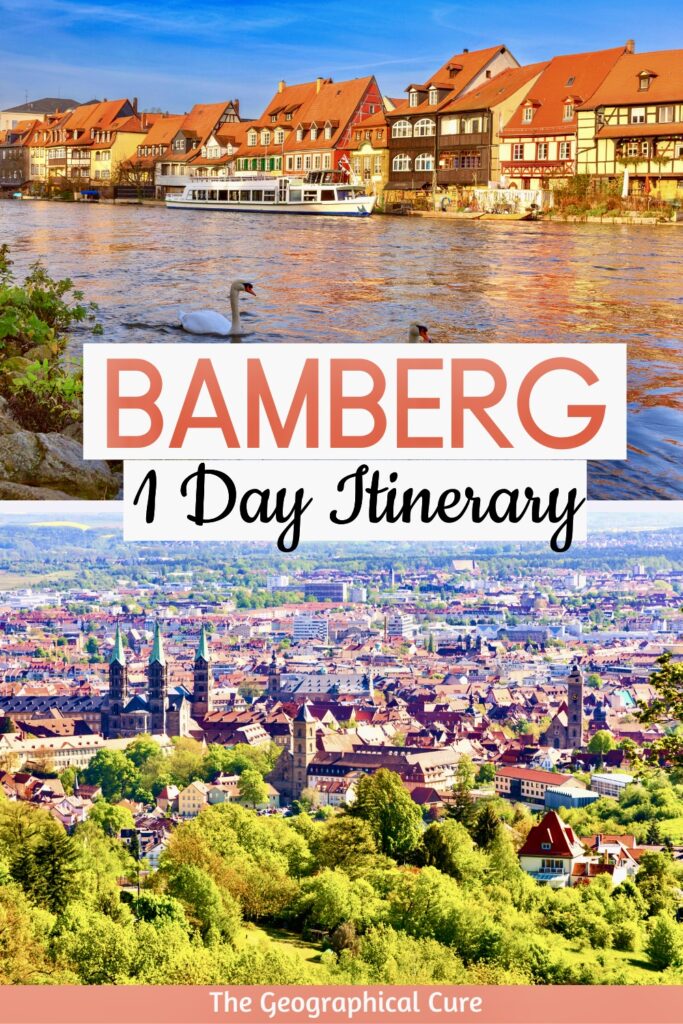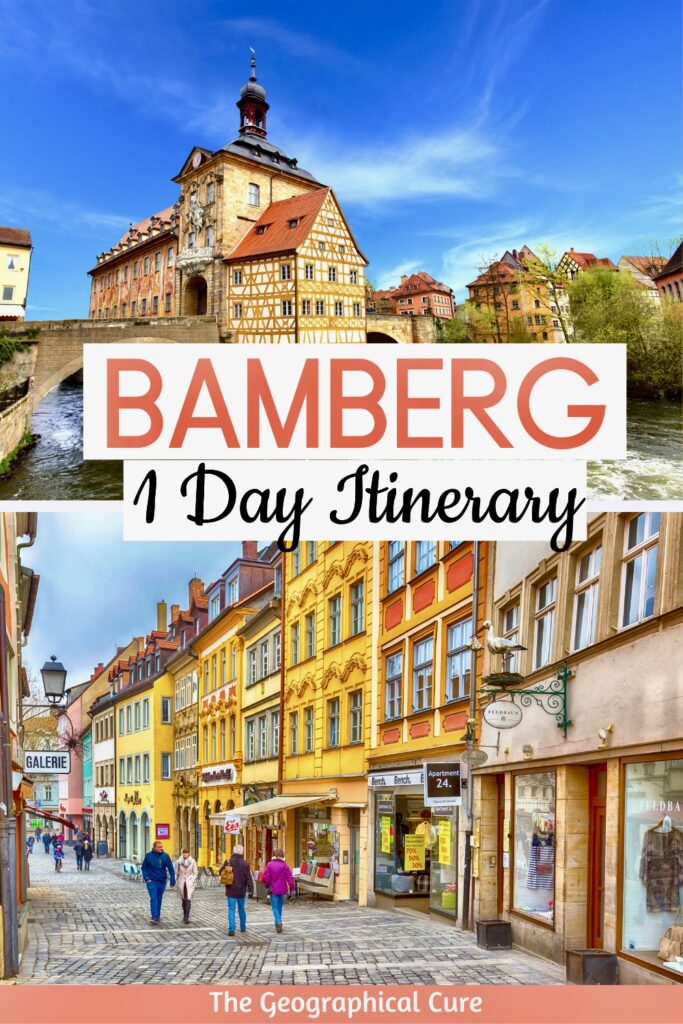A wonderful synthesis of nature and architecture, Bamberg sits at the point where rolling hills converge on the Regnitz River. It’s a true gem in northern Bavarian, or Franconia.
Bamberg is known for its quaint half-timbered houses, scenic canals, lofty churches, and grand palace. Often called the “city of seven hills,” it’s filled with medieval architecture and a fairytale charm.
The city’s Old Town (Altstadt) was untouched by WWII. In 1993, it became a UNESCO World Heritage Site, celebrating its picturesque and historic appeal.
Bottom line? Bamberg is a certified postcard that should be on your Bavaria bucket list. To help you have the best visit, I’ve created a step-by-step one day in Bamberg itinerary.
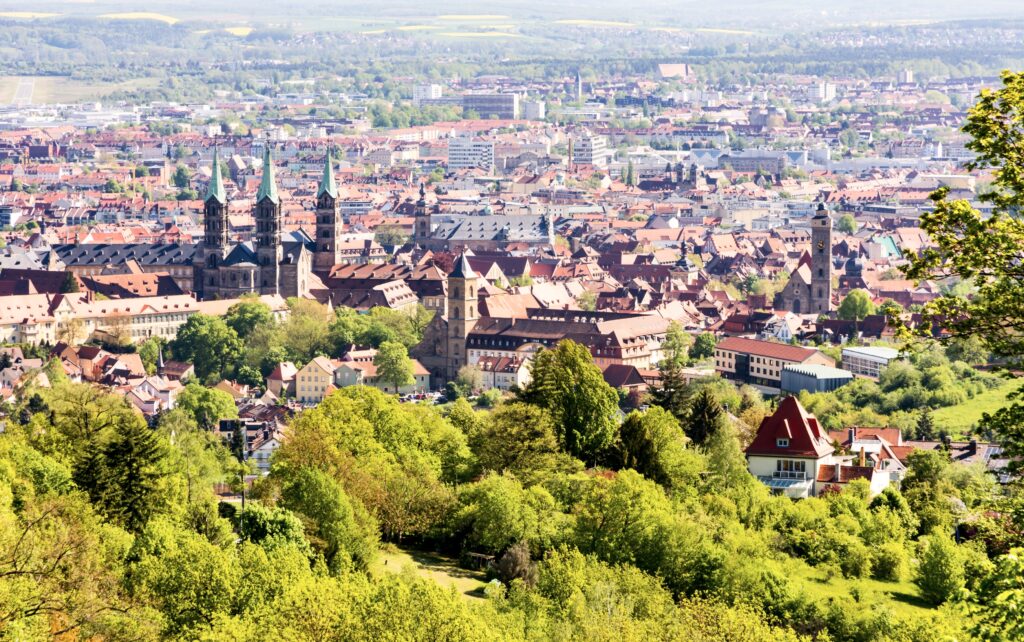
Snapshot Of One Day in Bamberg
Here’s a quick glance of what you can see with this Bamberg itinerary:
- Bamberg Cathedral
- Alte Hofhaltung
- Neue Residence
- Old Town
- Alte Rathaus
- Little Venice
- Michaelsberg Abbey
- Altenberg Castle
- Breweries or Franconian restaurant
>>> Click here to book a guided walking tour
One Day Bamberg Itinerary
Bamberg Cathedral
Begin your day in the Domplatz in the upper town.
Bamberg Cathedral, a glorious four towered edifice, is striking example of Romanesque architecture, dating back to the 13th century.
Inside, there are some masterpieces of medieval sculpture. You’ll find the mysterious Bamberg Rider. He’s shown as a noble figure on horseback, embodying the virtual of medieval German chivalry.
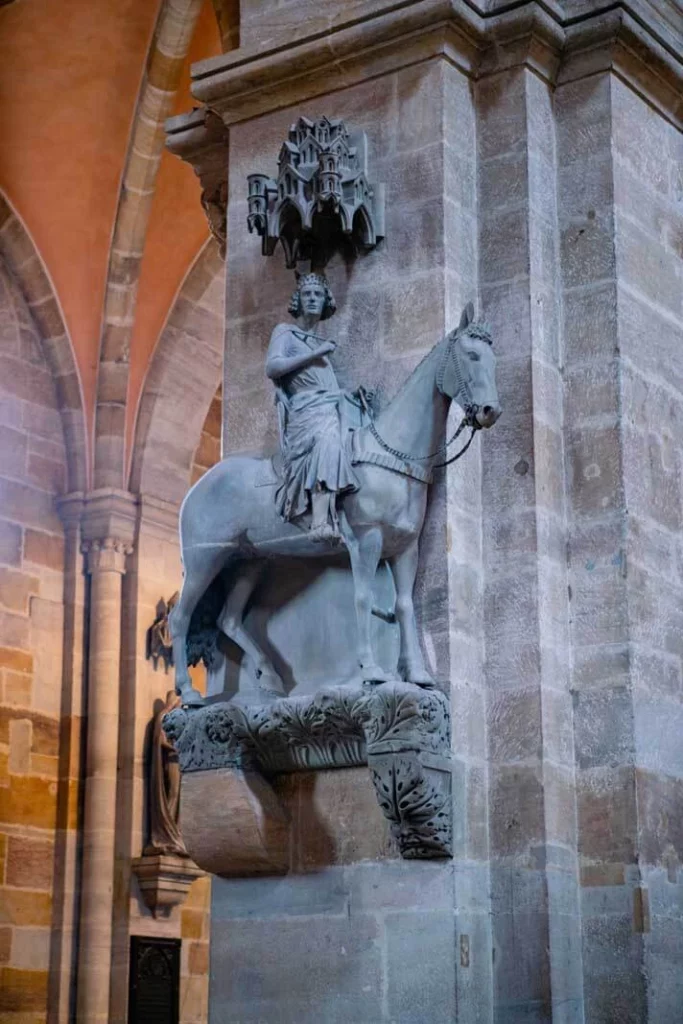
He may, in fact, be a representation of King Stephen of Hungary. (He’s the brother in law of Emperor Henry II who is founded and is buried in the church.)
The tomb of Heinrich II and Kunigunde was carved by master sculptor Tilman Riemenschneider. The marble slab on top is a likeness of the couple and there are relief sculptures on the side panel. It is breathtaking!
The cathedral also houses several ornate altars and artworks, including the famous Veit Stoss Altar. It was the artist’s last major work.
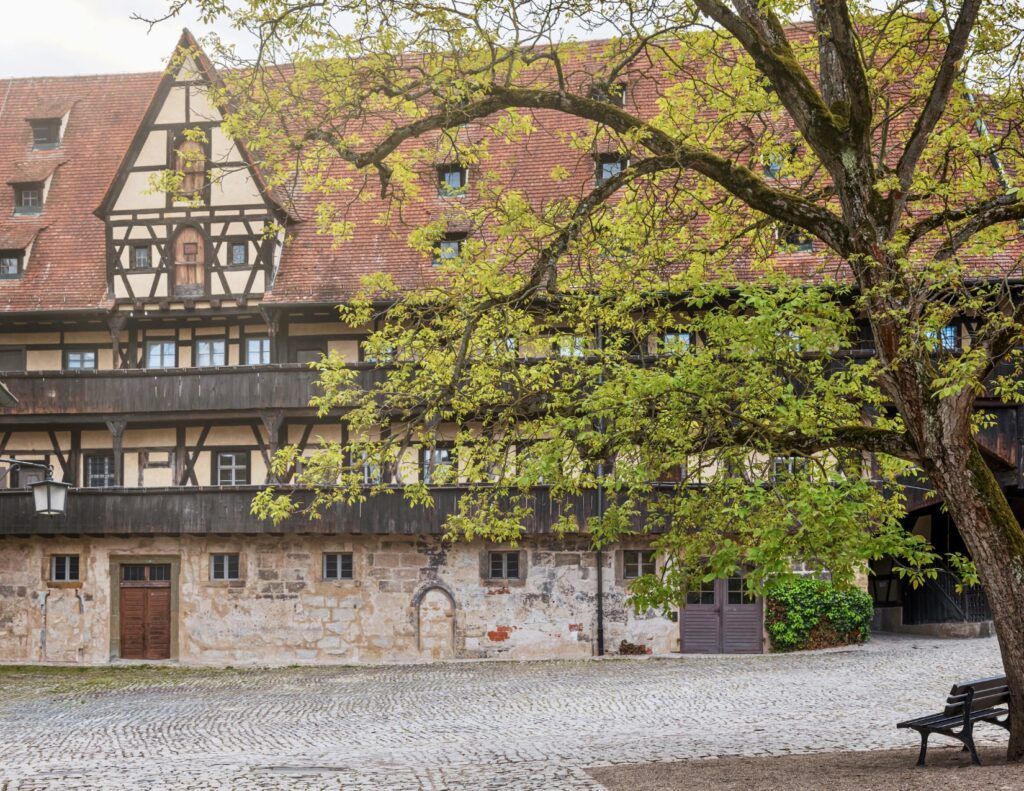
Alte Hofhaltung (Old Court)
Adjacent to the cathedral, explore the Alte Hofhaltung, a historic palace. It was originally built as an imperial palace and was later converted into the bishop’s residence.
Beyond the Renaissance gateway is an irregular courtyard overlooked by charming timber framed buildings.
It’s so picturesque that you won’t be surprised that it was a filming location for the film The Three Musketeers.
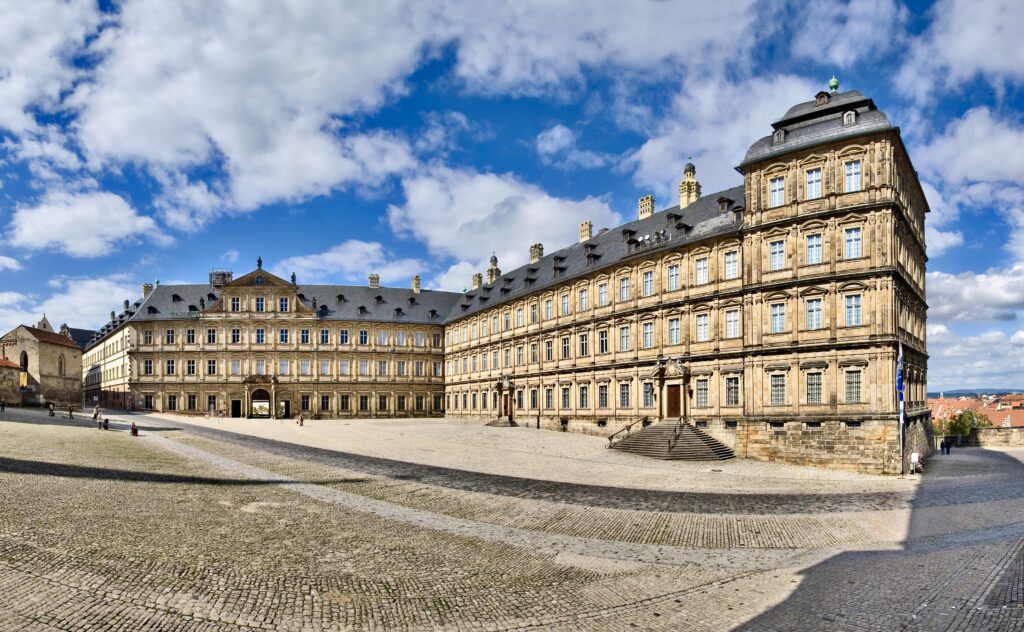
Neue Residenz
Then, visit the Neue Residenz, home to a fairly nice collection of old master paintings. Until 1802, it was the residence of Bamberg’s prince-bishops.
This impressive building showcases Renaissance and Baroque architecture, built in phases from the 17th century.
It’s home to the State Gallery, with collections of German Baroque and Italian paintings. You’ll find artworks by German masters such as Grien and Cranach.
The Kaisersaal, or Imperial Hall, is a highlight, adorned with frescoes and stucco work.
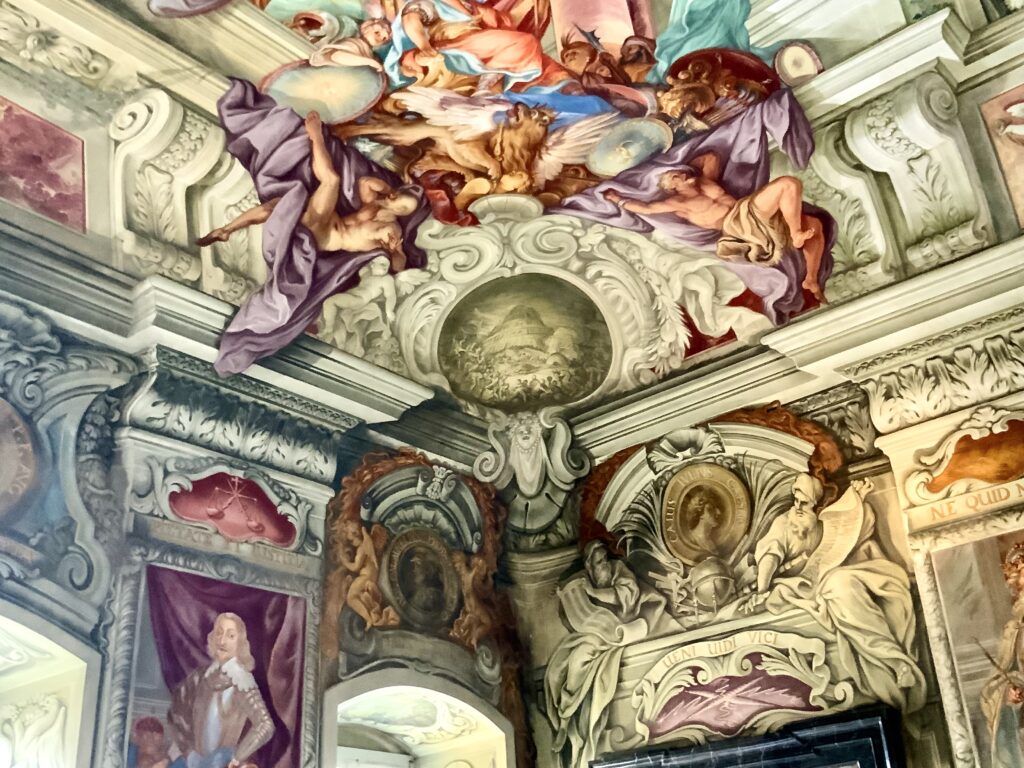
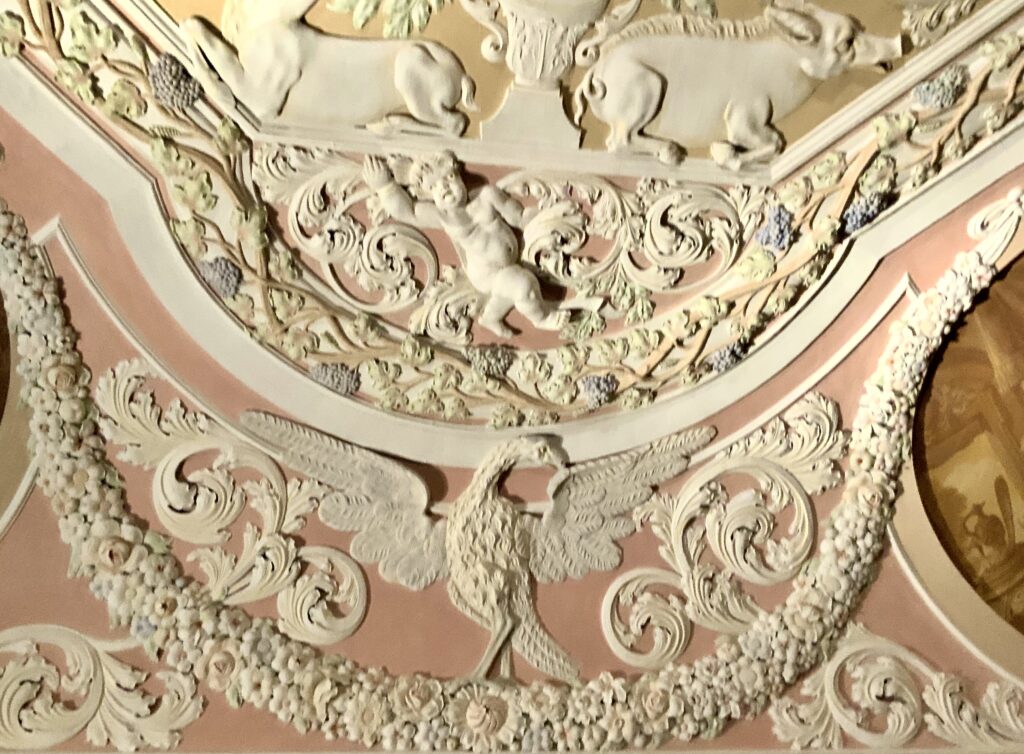
Altogether, visitors can explore around 40 rooms, including the prince-bishops’ apartments with their original furnishings.
Don’t miss the peaceful rose garden. From the terrace, you’ll have stunning city views.
The interior of the site is accessible only through 45 minute guided tours in German.
However, you can arrange an English tour by making a special appointment. I joined the German tour. But English guide sheets are available, which you can use to follow along.
Tip: You’ll have to check anything larger than a small purse for 2 euros in the lockers onsite.
Old Town Exploration & Lunch
Wander through Bamberg’s UNESCO-listed old town.
Explore the narrow streets, medieval buildings, and charming squares. There are whole streets full of gorgeous 18th century architecture.
Be sure to check out the Wedgewood House.
It’s one of the most unusual and colorful houses in Bamberg, featuring Wedgwood blue paint and white stucco designs around the windows and doors.
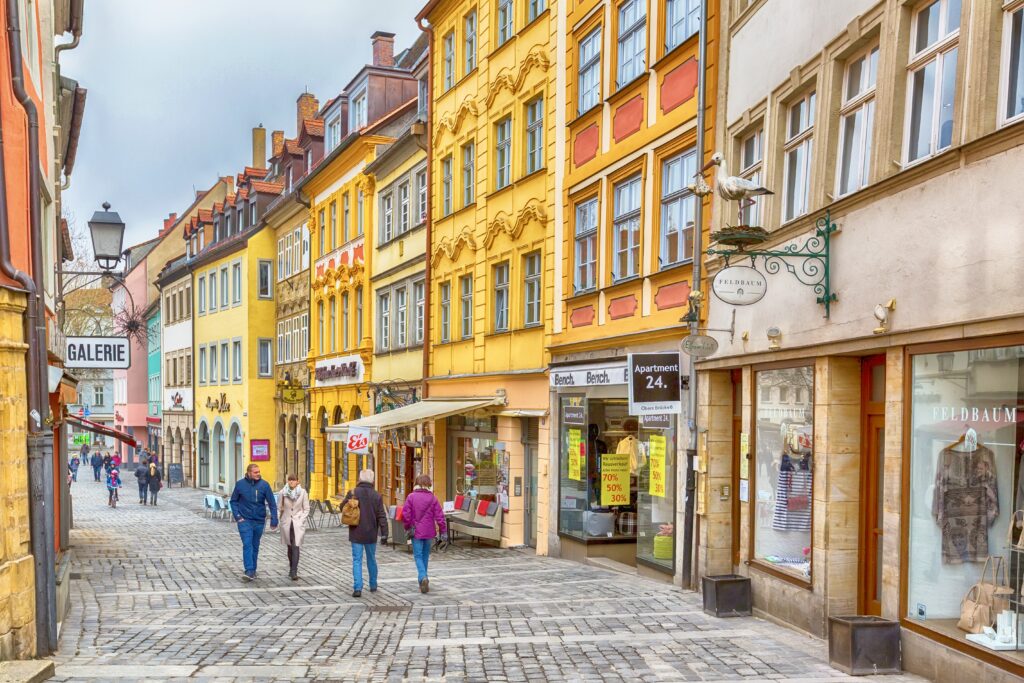
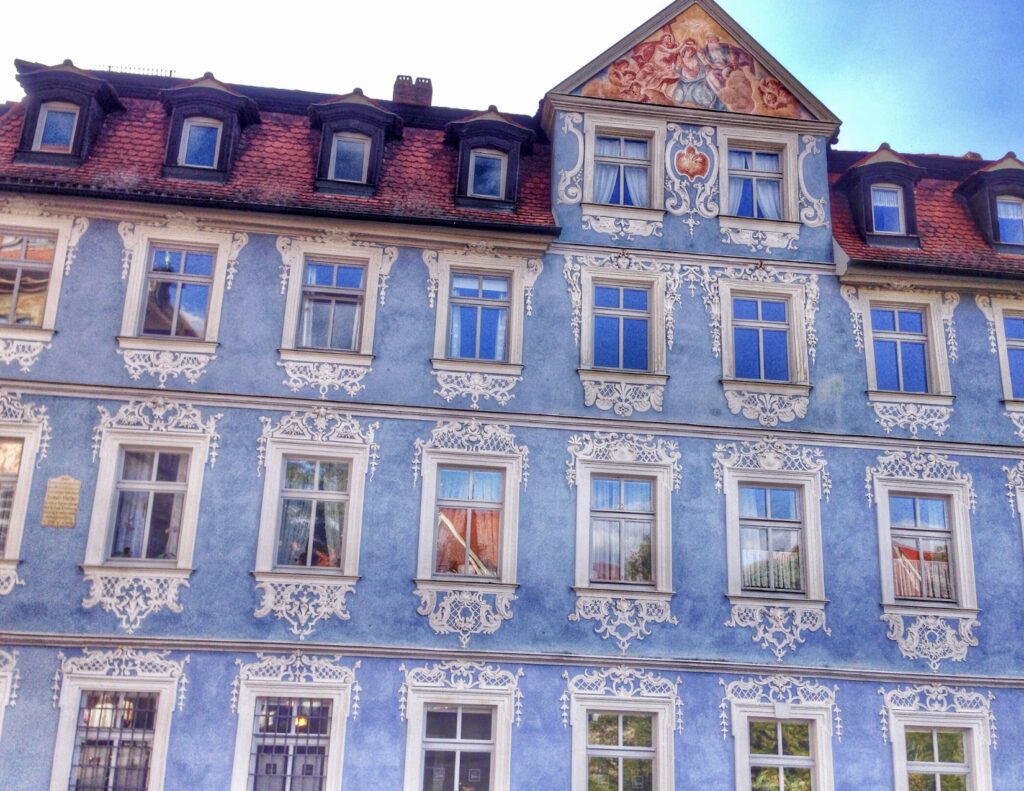
For lunch, stop to enjoy traditional Franconian cuisine at one of Bamberg’s historic breweries or a local Gasthaus.
Try some local beer, including the famous Bamberg Rauchbier (smoked beer).
The local food specialty is called the Bamberger Zwiebel. It’s a baked onion stuffed with mince meat, bacon, and beer gravy served with mashed potatoes. This is not light food!
There are few cute, and casual, cafes too. I had lunch at Spitz Rein.
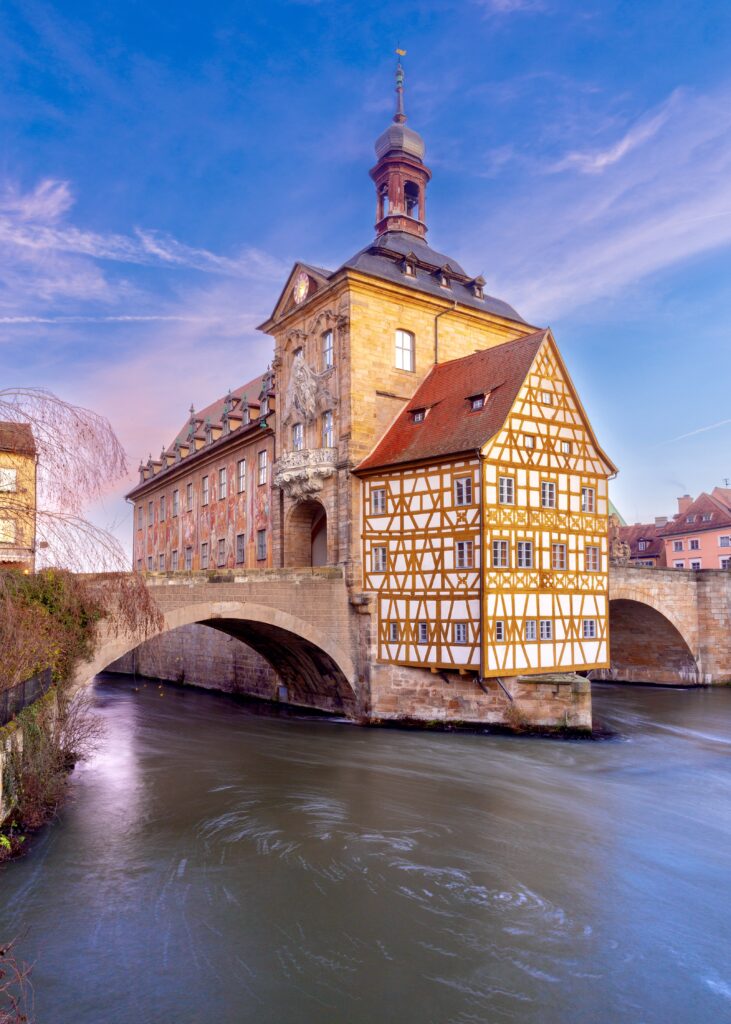
Alte Rathaus
After lunch waddle off to the Old Town Hall, built on an island in the middle of the Regnitz River.
It’s the most beautiful building in Bamberg and renowned for its stunning frescoes and unique location.
The unusual positioning is a result of a legend, which holds that the bishop of Bamberg refused to grant the citizens land for a town hall. So they created an artificial island in the river.
Architecturally, the building is a curious mix of architectural styles, primarily Baroque with Rococo influences.
There are three parts: an 18th century section adorned with trompe l’oeil frescos, an elaborate Baroque tower, and a yellow timber framed building.
These frescos are very eye catching and, a prime example of the intricate and colorful Rococo style.
Created by the artist Johann Anwander, they depict allegorical and mythological scenes, along with symbols representing justice and wisdom.
Inside the Alte Rathaus, there are several important artworks, including beautifully decorated rooms and historical artifacts. The interior also houses an exceptional porcelain and faience, the Sammlung Ludwig.
Church of Our Lady
When exploring Bamberg’s churches, one stands out: the Church of Our Lady, known as Obere Pfarre.
Construction began on this medieval marvel in the 11th century, evolving through various renovations. Its architectural style is primarily Romanesque and Gothic, adorned with intricate stone carvings and decorative arches.
Inside, you’ll find a spacious nave, stunning stained glass windows, and ornate vaulted ceilings. The 17th century Baroque high altar is a masterpiece.
The church also houses a vast painting by the Venetian Renaissance artist Jacopo Tintoretto.
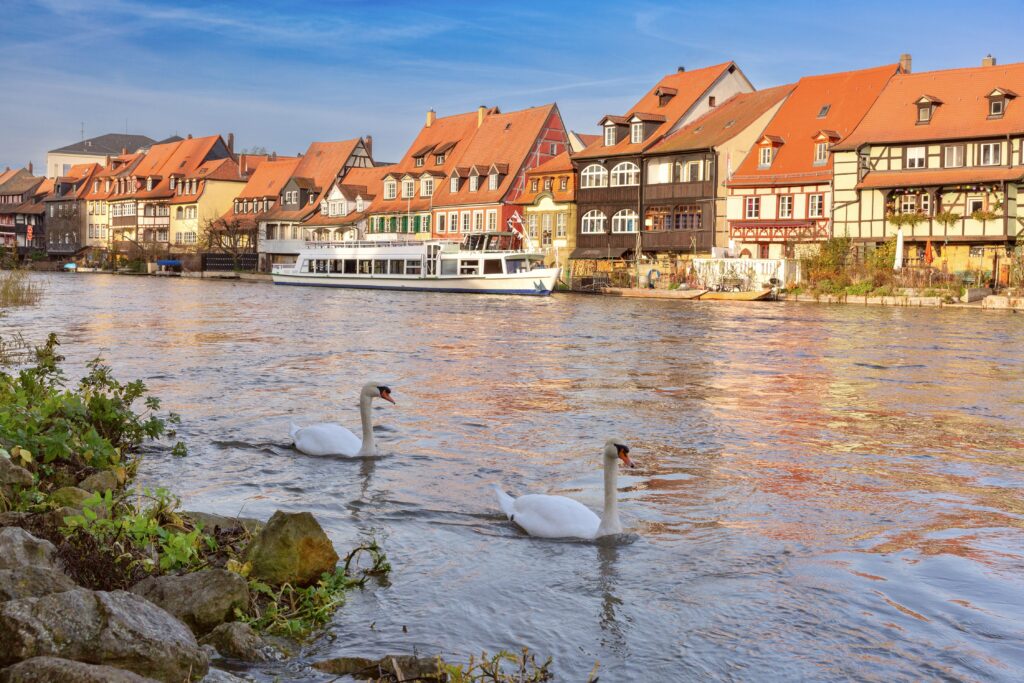
Little Venice (Klein Venedig)
Be sure to take a stroll along the Regnitz river to see the picturesque fishermen’s houses in the area known as Little Venice.
Quaint half-timbered houses that line the riverbanks. They create a scene reminiscent of the canals of Venice. The houses are colorful and well-preserved.
The area exudes a romantic and tranquil atmosphere, making it a favorite spot for both locals and tourists. It’s an excellent place for a leisurely stroll, taking in the scenic views, and enjoying the calmness of the river.
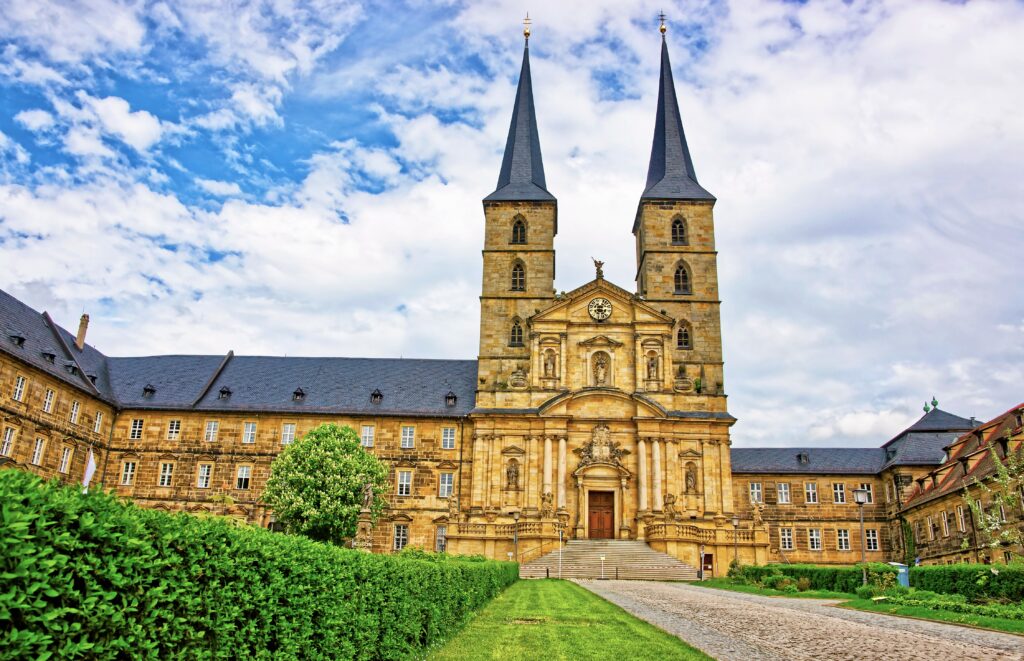
Michaelsberg Abbey
Michaelsberg Abbey isperched on a hill overlooking the city’s red rooftops. It offers panoramic views of Bamberg, making it a popular spot for visitors.
Founded in the early 12th century, the abbey is a former Benedictine monastery. It played a crucial role in the religious and cultural life of Bamberg for centuries.
The abbey is known for its Baroque architecture, particularly the church with its distinctive pointy towers. The complex also includes beautiful gardens and courtyards.
The Abbey is reachable on foot from Bamberg’s city center. The walk involves a bit of an uphill climb, but is very pleasant. You can also take the city bus to the top.
Tip: The abbey and church are currently closed for renovation. Still, it’s worth visiting just for the gorgeous views.
Altenberg Castle
As an alternative to the abbey, you could head instead to Altenburg Castle, situated on the highest hill in Bamberg.
It offers panoramic views of the city and its surroundings. To get there, it’s about a 20-30 minute walk from the town center.
The historic fortress that dates back to the early medieval period, though much of its current structure is from later renovations.
Inside, you will find a nice chapel and the medieval Knight’s Hall.
Tip: If you are not overnighting in Bamberg, you can drive your car up and park outside the gate. The one hour bus tour that leaves from the cathedral also stops here for 15 minutes.
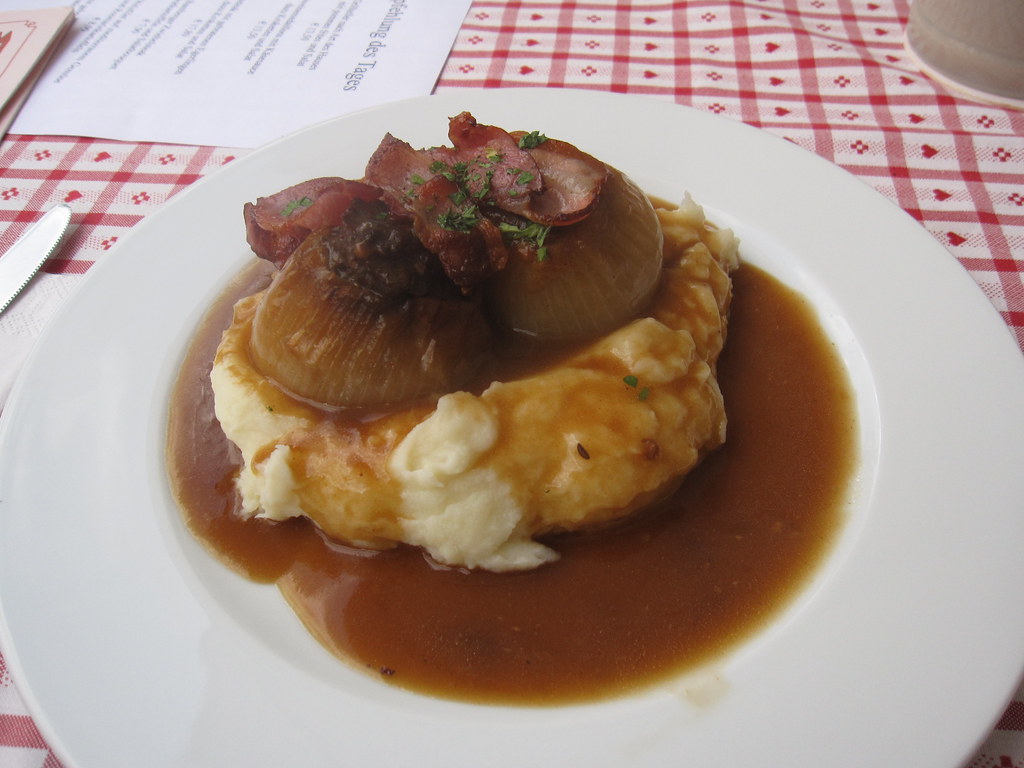
Drinks & Dinner in Bamberg
Though small in population, Bamberg has a rich beer culture.
The town boasts an impressive 10 breweries that serve more than 50 local beer varieties. Most are intimate family run businesses.
For the locals, these breweries are much like “living rooms,” a central part of community life and social gatherings.
Tip: If you want to follow the Bamberg Beer trail, the tourist office provides maps and brochures that outline the Beer Trail, showing the locations of the key breweries and beer taverns.
>>> Click here to book a historic beer tour with tastings
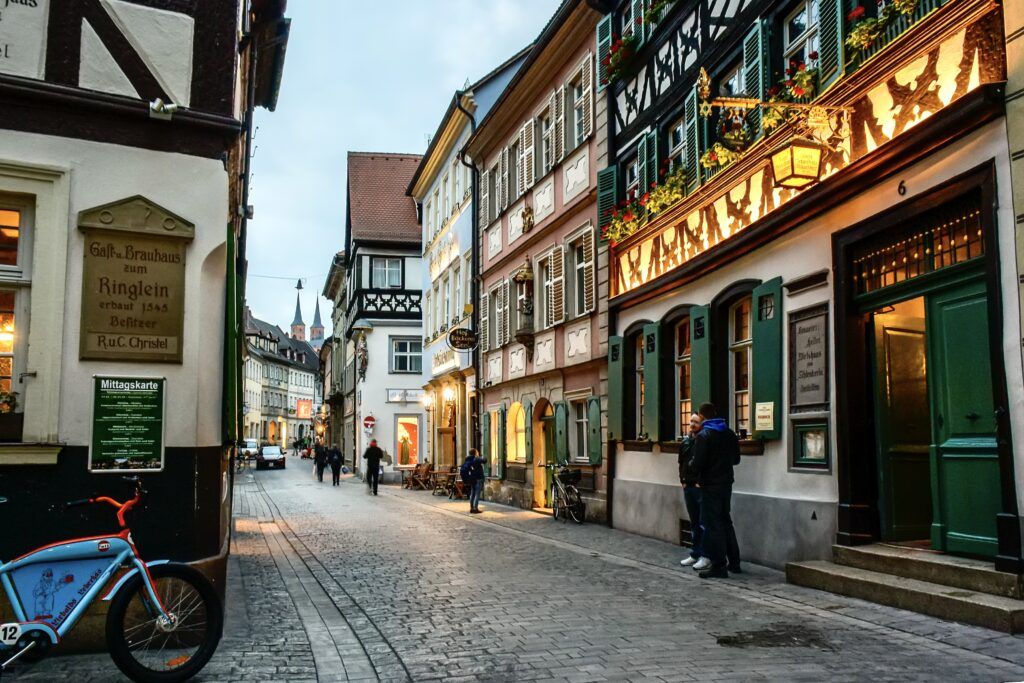
For dinner, head to one of Bamberg’s traditional Franconian restaurants for more local specialties. Some of the best restaurants include:
Schlenkerla: Famous for its Rauchbier (smoked beer), Schlenkerla is not just a brewery but also a restaurant serving traditional Franconian dishes.
Kachelofen: This restaurant is known for its cozy ambiance and serves a range of local specialties. It’s located in the heart of the old town, making it a convenient dining spot.
Restaurant Eckerts: Situated on the river, Eckerts combines modern ambiance with traditional cuisine. The restaurant offers a beautiful view of the water and the historic city.
Pelikan: For those looking for a slightly more upscale dining experience, Pelikan offers a blend of traditional and innovative dishes, with an emphasis on fresh local ingredients.
You can also book a guided food and beer tour to sample all the goods.
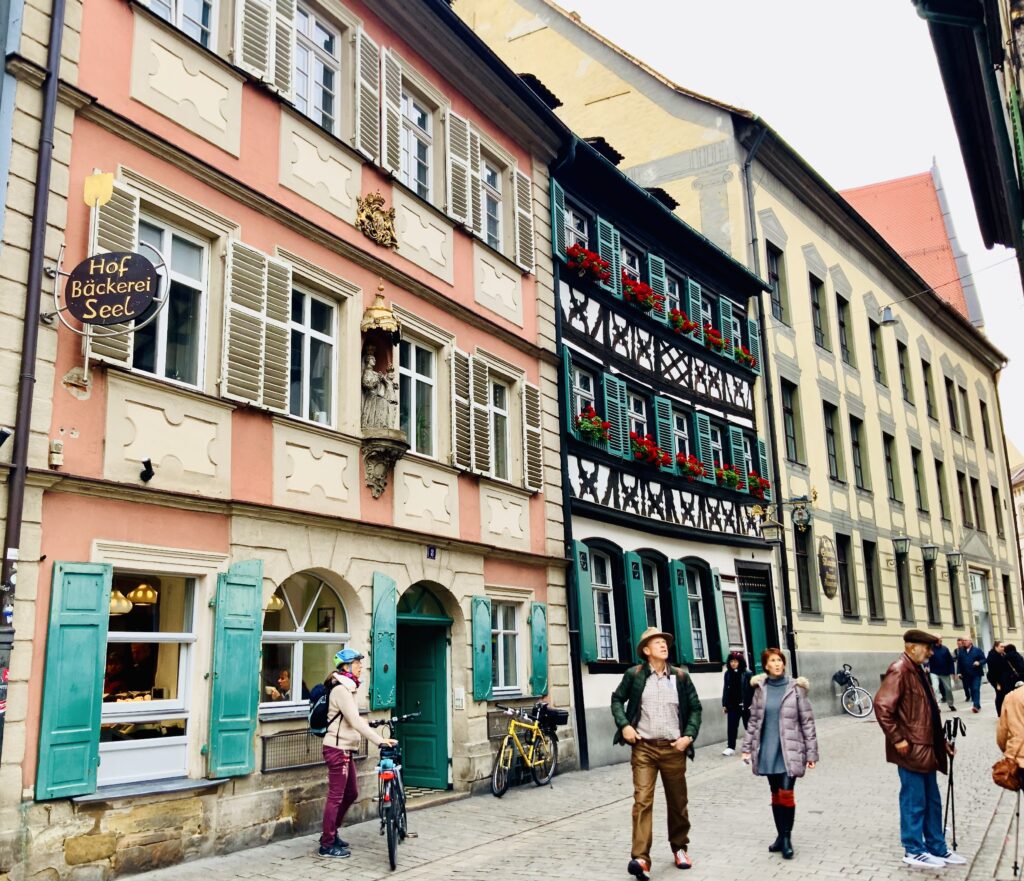
Evening Walk
End your day with an evening walk through the illuminated old town, enjoying the ambiance of Bamberg by night.
Tips For One Day In Bamberg
How to Get To Bamberg
The nearest airport is in Nuremberg. It’s about 1.5 hours away by car or 30-40 minutes by high speed ICE trains.
Bamberg is well connection by train to major cities in Germany. The train station is about a 15 minute walk to the historic center.
If you are driving to the town, Bamberg has several parking garages in and around the city center. These are convenient as they are often located close to major attractions. Look for garages like Zentrum-Süd, Karstadt, or Schützenstraße.
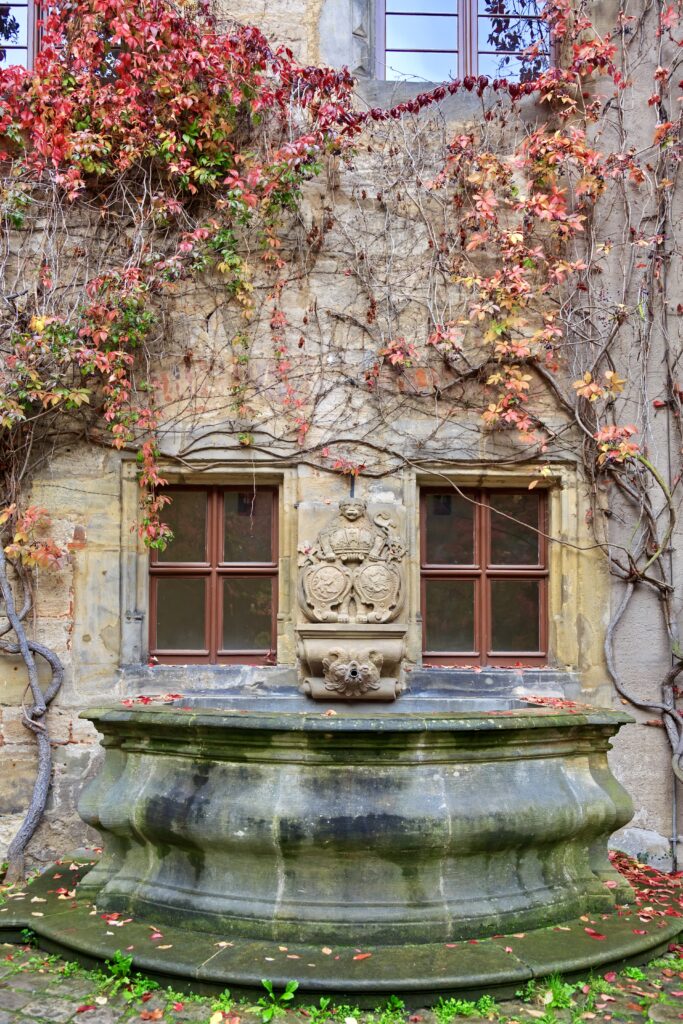
How To Get Around Bamberg
Bamberg’s historic city center is compact and best explored on foot.
Bamberg is also a bike-friendly city with numerous bike paths and lanes.
The town has a bus network as well. You can buy tickets directly from the bus driver when you board. And some stops have ticket machines.
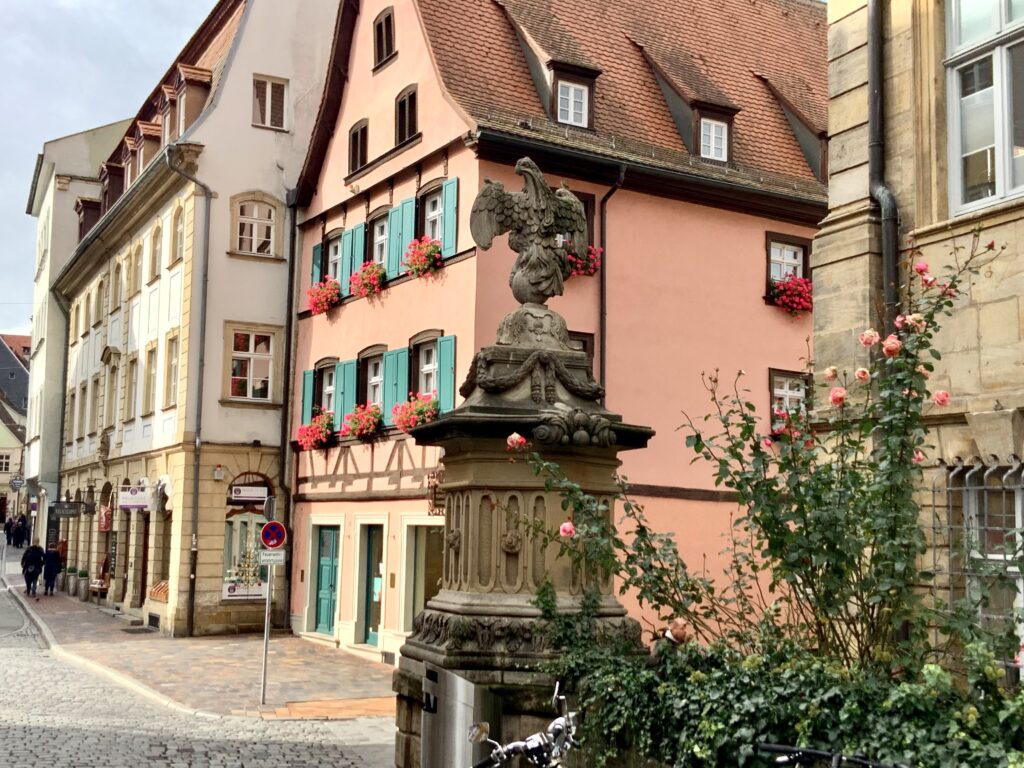
Where To Stay In Bamberg
On the whole, hotels in Bamberg are pretty pricey. Here are some good options:
Welcome Hotel Residenzschloss Bamberg: This opulent hotel offers a chance to stay in a former aristocratic palace. It’s known for its luxurious amenities and quiet location.
Villa Geyersworth: An elegant 4 star hotel situated on the picturesque banks of the old Ludwig-Danube-Main Canal on Geyersworth island.
Hotel Alt-Ringlein: A historic German timbered hotel with a beer garden right beside the famous brewery in the Old Town.
Hotel Am Dom: A charming boutique hotel with breakfast in the Old Town.
I hope you’ve enjoyed my one day in Bamberg itinerary. You may find these other Germany travel guides useful:
- Prettiest Towns in Germany
- 10 Day Bavaria Itinerary
- Landmarks in Germany
- Must See Sites on the Romantic Road
- 24 Hours in Munich
- 4 Day Itinerary for Munich
- Top Attractions in Nuremberg
- Guide To Neuschwanstein Castle
- Tips for Traveling in Germany
- Castles in Bavaria
Pin it for later.

